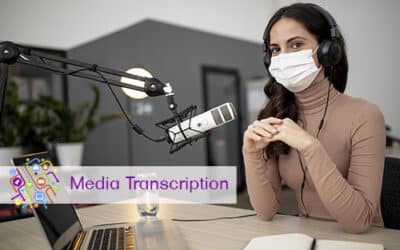Business organizations have various departments and the marketing division stand above all other sections. This department adopts strategic approaches to promote your business and drive sales. Conducting regular meetings with your marketing team helps to increase the number of leads and conversions and also helps to discuss new ideas, issues, and disputes and also make informed decisions. Critical decisions taken during a meeting can be transcribed into text format with business transcription, so that the transcripts can be distributed within the organization or stored for future use. So, to make the most of the meetings and ensure that marketing meetings aren’t blocks of time your team dreads, consider the following tips:
- Decide on who all should attend the meeting: A meeting becomes effective only if the right people are invited. Make sure that only required decision makers are invited instead of inviting everyone and wasting time and resources. Send out invitations to the meeting attendees mentioning the date, time, and place of meeting and make sure that the invitees are diverse in terms of age, gender, talent, and job levels so as to get a wide range of perspectives that are important to make the right decisions.
- Know the purpose of the meeting: Knowing the purpose of the meeting is essential to conduct the meeting in a productive way. Stuffing too many topics to discuss and decide in a single meeting can be tedious. So, knowing the exact purpose of the meeting helps to keep it more realistic, make use of the meeting time in a worthwhile manner and avoid unnecessary recurring meetings.
- Identify the meeting’s goals: Meeting goals refer to what is expected at the end of the meeting. Setting your meeting goals is vital to keep your marketing team focused on achieving those goals during the allotted amount of time. Make sure that the goal of the meeting is mentioned in the invitation so that your attendees can come prepared.
- Develop an agenda: After identifying the purpose and goal of the meeting, the next step is to set up an agenda. An agenda is a detailed list of activities and topics that need to be discussed in the meeting. An agenda helps to keep track of what is being discussed, and prevent digression. Having a detailed agenda of the meeting helps the marketing team members to prepare for the meeting and make effective contribution.
- Share your agenda with the attendees: Once your agenda is ready, circulate it among the attendees so that they get enough time to prepare for the meeting. They can read the background materials and prepare their initial thoughts before the meeting. This advanced distribution strategy allows for feedback from attendees. They can also submit their own topics prior to the meeting and this makes the meetings more interactive as well as productive.
- Assign a meeting facilitator: Appointing a meeting facilitator who has good processing skills and can co-ordinate between the attendees when more than one person wants to contribute, is essential to ensure that the meeting is on track. The facilitator will also have the responsibility to lead the topics of the meeting.
- Decide whether the meeting should be lengthy or short: Meetings can be long or short, but short meetings are always more effective. Long meetings can make the attendees feel bored and frustrated. Setting a meeting for 30 minutes is ideal so that the attendees will remain focused on the important things. You can set the time for meetings by assigning realistic time estimates for each agenda item and this helps to calculate the time required for the meeting. Here the facilitator plays a vital role in keeping the meeting on track.
- Set a time for brainstorming: The marketing meeting agenda should include time for brainstorming too. This is because a meeting is where everyone gathers to share thoughts, ideas and opinions and you will never know when a different viewpoint may arise that everyone else missed.
- Set up your equipment before the meeting: Make sure to set up equipment like laptops or computers, recorders, projectors etc before starting the meeting to avoid wastage of time.
- Ensure your presentation slides are legible: Including slides in your meeting prevents distraction on the part of the participants. But make sure that the slides are legible and the ideal count of slides is 60. Including too many slides can be boring.
Additional Tips If the Meeting Is Virtual
This is the time of the COVID-19 pandemic and most organizations have shut down to encourage social distancing. This has increased the demand for virtual meetings. So, here are some additional tips that you can keep in mind.
- Keep the cameras on and look at the camera: Ask all attendees to keep their cameras on so that people can see each other. Also, it is important to look into the camera as often as possible and maintain eye contact. Make sure not to wear your pyjamas for the meeting. Be well-dressed and look presentable.
- Mute yourself: It can be difficult to hear when multiple attendees are talking at once. So, the best practice is for each participant to mute themselves and unmute only when they have to say something.
- Avoid multitasking: When you are attending a virtual meeting, you may be tempted to check your inbox, or your mobile. But make sure to avoid multitasking because it can break the flow of the conversation and you may miss out on some of the vital points.
- Use the right technology: There are several platforms like Zoom, Webex etc that provide face timing with the members of the meeting. These technologically advanced platforms make meetings more interactive virtually.
- Use password-enabled meeting rooms: Make sure to conduct meetings in password-enabled meeting rooms to ensure security of critical and confidential data, and decisions taken during the meeting.
- Record virtual meetings: Virtual meetings are easier to record. It also helps to take notes, files, and screenshots, which makes meetings more efficient. The recorded meeting can be transcribed and preserved for future reference.
For any meeting, experience and knowledge of the employees go a long way when it comes to gaining valuable ideas and inspirations. The best way to have an accurate text of the meeting proceedings is to record the entire meeting and have it transcribed with the support of professional business transcription services.




